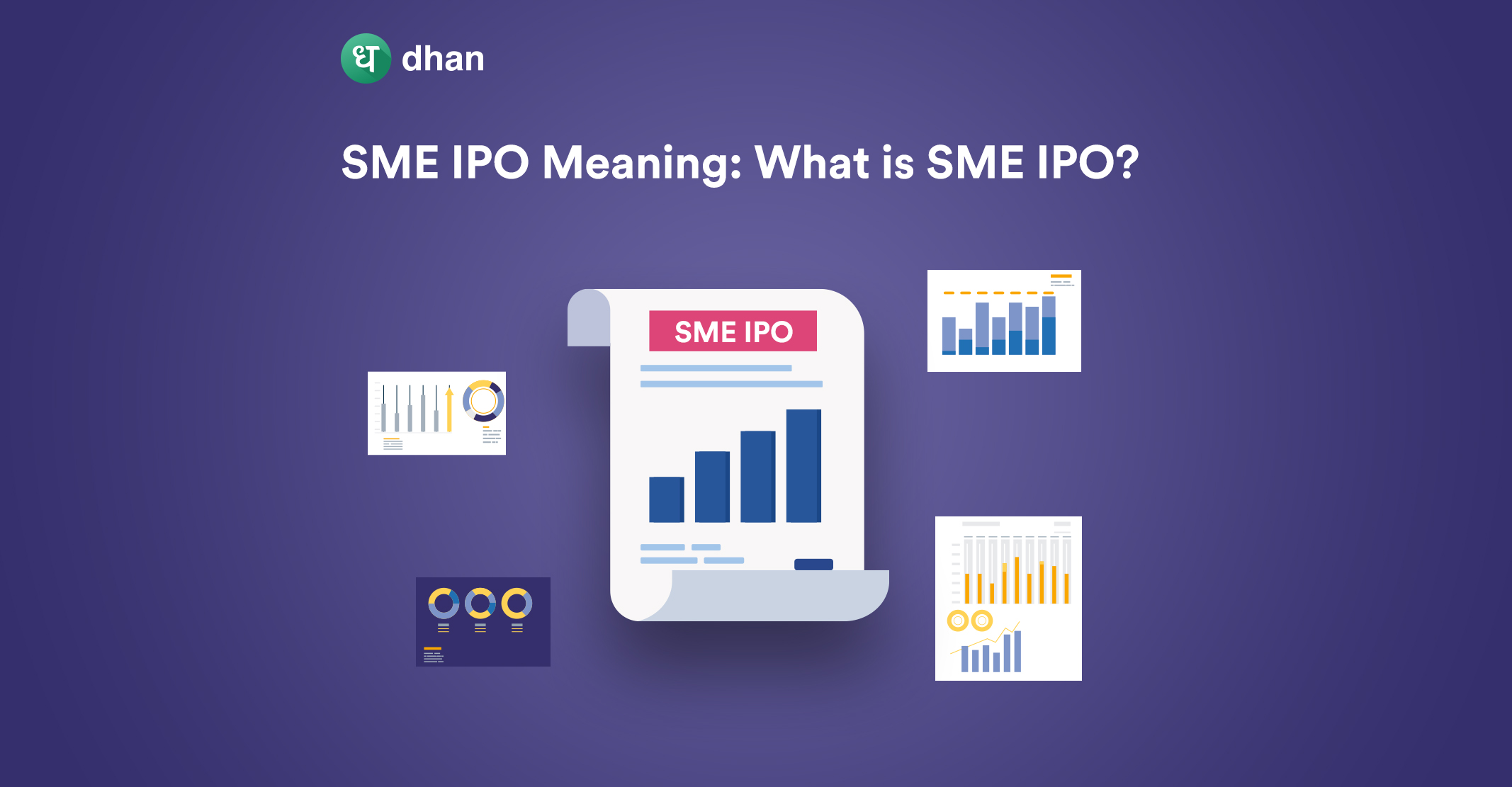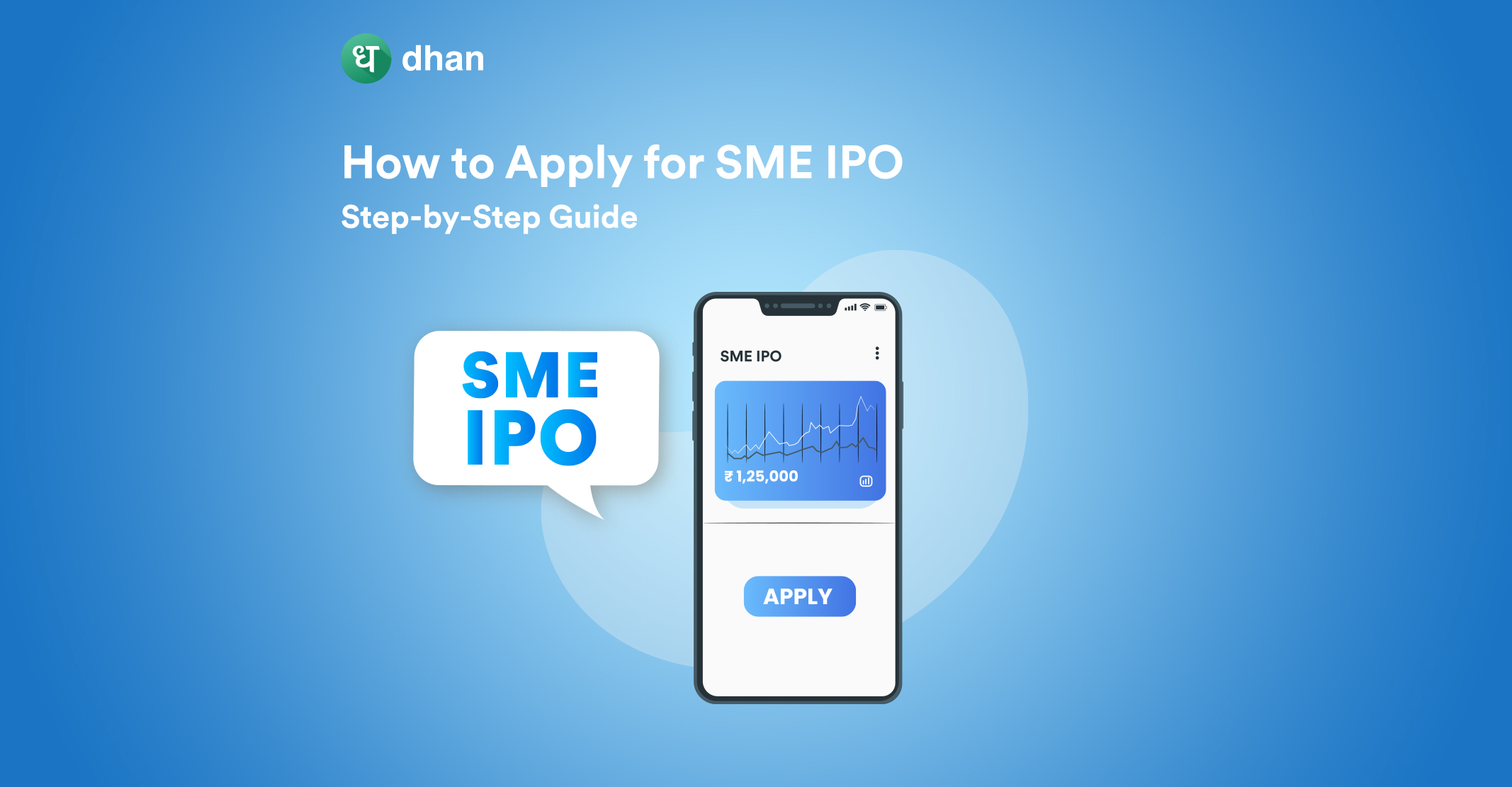Small and Medium Enterprises (SMEs) are integral to the economics of the nation, right from supplying large companies with raw materials to hiring a sizable workforce. That’s why SME IPO meaning is important to know.
SME Initial Public Offerings (IPOs) or SME IPOs for short allow promising companies to offer shares to the public and raise capital. Read on to know the meaning of SME IPOs.
What is SME IPO: SME IPO Meaning Explained!
An SME IPO refers to the Initial Public Offering of shares by a Small and Medium Enterprise (SME) to the general public for the very first time. This has multiple benefits for the SMEs and public investors.
The IPO allows the SME to raise capital for expanding business, developing new products, funding new ventures, enhancing visibility, and accessing a wider set of investors.
As an investor, participating in an SME IPO gives you a chance to hold a stake in promising small businesses and earn potentially lucrative returns as the company grows.
In summary, the SME meaning in IPO presents a specific focus on smaller companies seeking access to public markets and investment opportunities for growth and expansion.
Advantages of SME IPOs
Much like any other investment, SME IPOs offer their own set of benefits that may appeal to investors with an above-average risk appetite. The advantages are as follows.
1. Growth Potential
Think of SME IPOs as a chance to participate not just in a small company’s growth story but also support the backbone of local economies.
2. Early-Stage Investing
While SME IPOs already have a track record of being a legit business, albeit at a smaller scale, investing in them can help you get in at a nascent stage where the growth of the SME has strong potential.
3. Diversification
An SME IPO can provide diversification to your investment portfolio, as it enables access to different sectors and industries beyond the larger, well-known companies. These sectors will, of course, have different risk-return characteristics.
4. Lower Valuation
SME IPOs are often priced at a lower valuation compared to larger, well-established companies. This lower valuation can present opportunities for you to acquire shares at an attractive price.
5. Participating in Economic Growth
By investing in SME IPOs, you support the growth of small businesses, contribute to job creation, and play a role in stimulating economic development.
Risks of SME IPOs
Investing in any financial asset or instrument carries risks. The following risks are associated with SME IPOs.
1. Uncertain growth prospects
SMEs may face challenges in scaling their operations or maintaining consistent growth. This is due to the relatively small scale that SMEs operate on and the level of capital they must raise to compete with well-established, large corporations in their domain.
2. Higher risk
Investing in early-stage SMEs carries a higher risk of failure, as these companies may not have foolproof business models. Not to forget, SEBI doesn’t regulate SME IPOs.
3. Lack of SEBI Involvement
SME IPOs are vetted and approved by individual exchanges, not the Securities and Exchange Board of India (SEBI) which overlooks every aspect of main board IPOs, including the biggest IPOs in India.
4. Limited access
SME IPOs are listed on one exchange like NSE or BSE and work on an allotment basis, which means you’re not guaranteed a lot of shares in your demat account at the end of the subscription period.
5. Lack of liquidity
Once an SME stock moves to the secondary market, it is typically classified as a smallcap (or microcap). Most smallcaps and microcaps carry liquidity issues, meaning they can’t be sold easily.
Process of Applying for SME IPO
The process of applying for an SME IPO typically involves the following steps:
Step 1: Open a Demat Account
The shares that you’ll be allotted will be transferred to your demat account. That’s why having a demat account is necessary for SME IPO investing. Opening a demat account is simple.
- Go to https://dhan.co/open-demat-account/
- Add relevant details
- Submit your KYC
- Get an active demat account in 10 minutes or less!
Step 2: Application Process
Access the Markets Section and navigate to “IPOs” on Dhan web or app to search for the specific SME IPO you wish to apply for. Review the details and terms of the IPO.

Step 3: Provide UPI Details
Enter your UPI ID linked to your bank account for payment and allotment purposes. Make sure the UPI ID is active and has sufficient funds for the application.
Apart from UPI, you can also select different payment options, such as bank transfers.
P.S: You can update your primary bank account whenever you want.
Step 4: Submit the Application
Enter the number of shares or the amount you want to trade and submit the application. This number is usually predefined and fixed. Double-check all the details before finalizing the submission.
Step 5: Authorization and Payment
Once you submit the application, authorize the payment through UPI or any other method you have selected. You will receive a payment request on your UPI app, which you must approve within the specified time.
Step 6: Allotment and Listing
After the SME IPO period ends, the shares will be allotted based on the IPO’s subscription and demand. The shares will be credited to your Demat account if you receive an allotment.
In case you don’t get the allotment, the funds will be credited to your initial method of payment.
Factors to Consider Before Applying for SME IPO
You should consider these five important factors before filing for an SME IPO.
1. Financial Performance
Assess the SME’s financial stability and development potential by examining its financial statements, sales growth, profitability, and debt levels.
2. Business Model and Industry
Understand the SME’s business model, competitive edge, and industry. Consider market demand, competition, and SME positioning.
3. Management Team
Evaluate the SME’s management team’s experience and reputation. The IPO and the company’s future depend on good leadership and management.
4. Valuation
Assess the SME IPO’s valuation by comparing it to industry peers. To evaluate the IPO’s price, consider the price-to-earnings ratio, price-to-sales ratio, and other indicators.
5. Risk Considerations
Carefully review the SME’s prospectus’ risk considerations. Consider regulatory risks, market volatility, operational constraints, and SME and industry-specific hazards.
SME IPO vs. Traditional IPOs
Now you probably have understood the meaning of SME IPO and everything else related to the same. So, let’s discuss the difference between SME IPO and Traditional IPOs.
1. Regulation
Regular IPOs are regulated by SEBI, while SME IPOs are validated by the exchanges, leading to faster approvals and quicker launches for SMEs.
2. Size of the Company
SME IPOs require a minimum post-paid-up capital of Rs. 1 crore, while regular IPOs have a minimum requirement of Rs. 10 crores, encouraging smaller companies to expand and providing a platform for growth.
3. Allottees
Regular IPOs must have a minimum of 1,000 allottees, whereas SME IPOs require a minimum of 500 allottees.
4. Size of the Application
The size of the application in an SME IPO is Rs. 1 lakh, whereas regular IPOs have a lower ticket size, typically ranging between Rs. 10,000 to Rs. 15,000. But it can vary based on the lot size and issue price.
Conclusion
The SME IPO’s meaning revolves around the offering of shares by SMEs to the public. SME IPOs provide SMEs the opportunity to raise capital from the public through the stock market.
With a relaxed listing process and lower entry barriers, SMEs can expand their operations and access a wider trader base.
By opting for SME IPOs, these companies can gain faster approvals from the exchanges, ensuring quicker launches.
This supports the growth of SMEs in India, as they can harness the benefits of the capital market while complying with the specific requirements of an SME IPO.
Like this? Then you’ll love:
- Bonus Shares in India – Most Bonus Giving Shares
- Top 10 Highest Dividend Paying Stocks in India
- Top 10 Penny Stocks in India for 2023
- Best Passive Income Ideas for 2023
FAQs
Q. What is difference between normal IPO and SME IPO?
The main difference between a normal IPO and an SME IPO is the size of the company. SME IPOs are for promising smaller companies that typically have lower capital requirements.
Q. Is it good to invest in SME IPO?
Investing in SME IPOs can open the door to potential capital gains. But, it’s important to conduct thorough research because SME IPOs may carry higher risks than mainboard IPOs. At the end of the day, SMEs are smaller, less-established companies that have their own pros and cons.
Q. Can I sell SME IPO shares?
Yes, you can sell SME IPO shares after they are listed on NSE or BSE.



